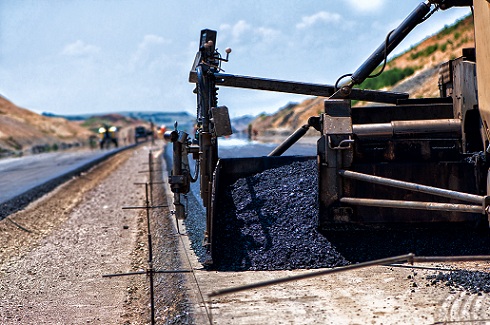A new age in road construction began on 9 May 1922. Hugh Alan McKey registered the first bitumen emulsion patent. Within several years the application of this new material significantly changed road construction.
The amount of bitumen emulsions made in France in 1923 was several hundred tons. In 1924 it increased to 2500, and to 6000 tons in 1925. Other countries followed. By the end of 1926 the total amount of emulsion made in Germany, Britain, India, Australia and Denmark reached 150000 tons.
France increased production as well (2000000 in 1935 and 300000 tons before the start of WWII).
After the war the amount of emulsion production kept increasing.
Cationic emulsions first appeared in 1951. Their performance pushed anionic emulsion from the market. If in 1962 the ratio was 50/50, in 1971 cationic emulsions accounted fro 92% of the market. At the time the portion of bitumen in the emulsions was 60-69%.
The United States used 100000 tons of emulsion for road construction in 1953, West Germany used 140 000 tons. The amount of material used in other countries was slightly less.
Mineral materials used in road construction are silicate materials. On contact with water these materials become negatively charged, hence the higher adhesion with cationic emulsions.
The British standard BS 812:1960 regulates sampling and testing of filling material used in road construction in the UK.
It should be noted that anionic bitumen emulsion could react well with positively charged materials, but such materials are not often seen naturally.
One of the possible explanations of the advantages of the cationic emulsion is the high kinetic energy of cationic emulsifiers, allowing better adhesion to almost all solid materials.
Bitumen particles pass through a water layer around the filling material and then contact directly the solid surface. Even if the surface is positively charged, the adhesion is good due to the Van der Vaals forces.
There is another theory explaining the interaction of cationic emulsions with alkaline materials. It states that cationic emulsions always contain some free acids. They have low pH and can interact with alkali on the surface of the filling material. The results of the reaction are carbonate ions with negative charge. They neutralize ions of the cationic emulsifier. An insoluble product forms on the boundary between bitumen and mineral, strong enough for adhesion between the components.
Development of special equipment for production of bitumen emulsions (UVB-1) and polymer modified bitumen (UVB-2) by GlobeCore allows the use of these materials not only in road construction, but also in civil engineering.

